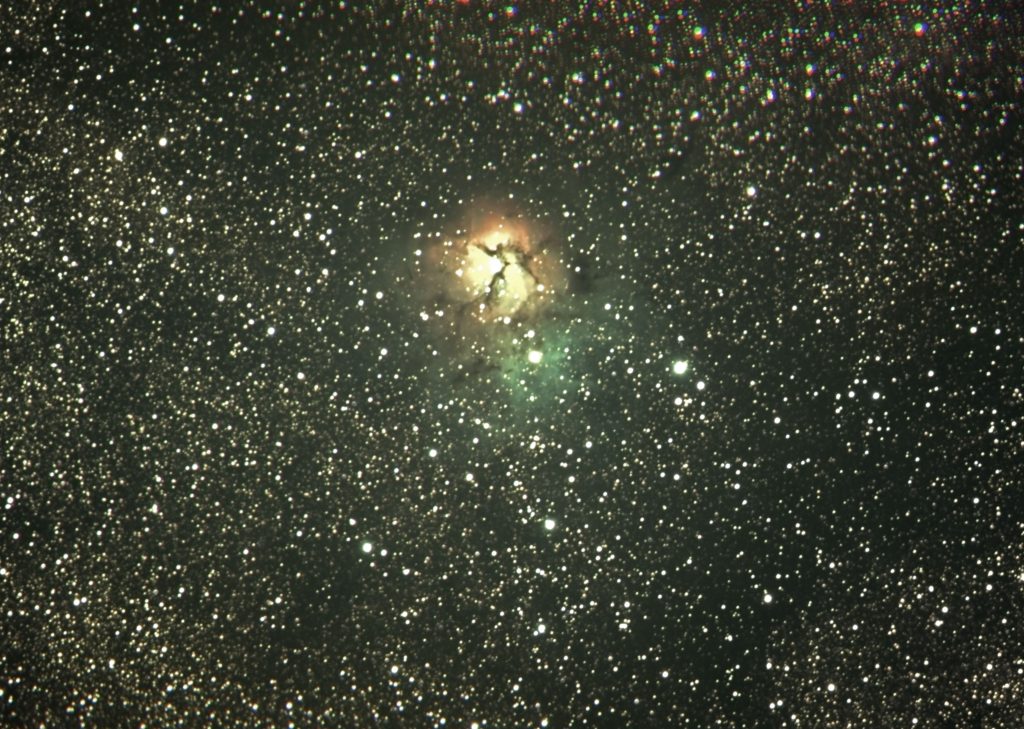I captured this image of the Trifid Nebula early Saturday morning with my 11″ SCT and Hyperstar. The original image was significantly larger but the nebula is a little small for that scale and so I cropped it. This was made from 30 64 second images.
According to Wikepedia, “The Trifid Nebula (catalogued as Messier 20 or M20 and as NGC 6514) is an H II region located in Sagittarius. It was discovered by Charles Messier on June 5, 1764. Its name means ‘divided into three lobes’. The object is an unusual combination of an open cluster of stars; an emission nebula (the lower, red portion), a reflection nebula (the upper, blue portion) and a dark nebula (the apparent ‘gaps’ within the emission nebula that cause the trifurcated appearance; these are also designated Barnard 85). Viewed through a small telescope, the Trifid Nebula is a bright and peculiar object, and is thus a perennial favorite of amateur astronomers. The Trifid Nebula is a star-forming region in the Scutum spiral arm of the Milky Way. The most massive star that has formed in this region is HD 164492A, an OIII star with a mass more than 20 times the mass of the Sun. This star is surrounded by a cluster of approximately 3100 young stars.”

Below is another view of the nebula. Unintentionally, this was recorded in monochrome. I’ve only cropped the rough edges to give you a better idea of the scale that the Hyperstar and this camera can achieve.

